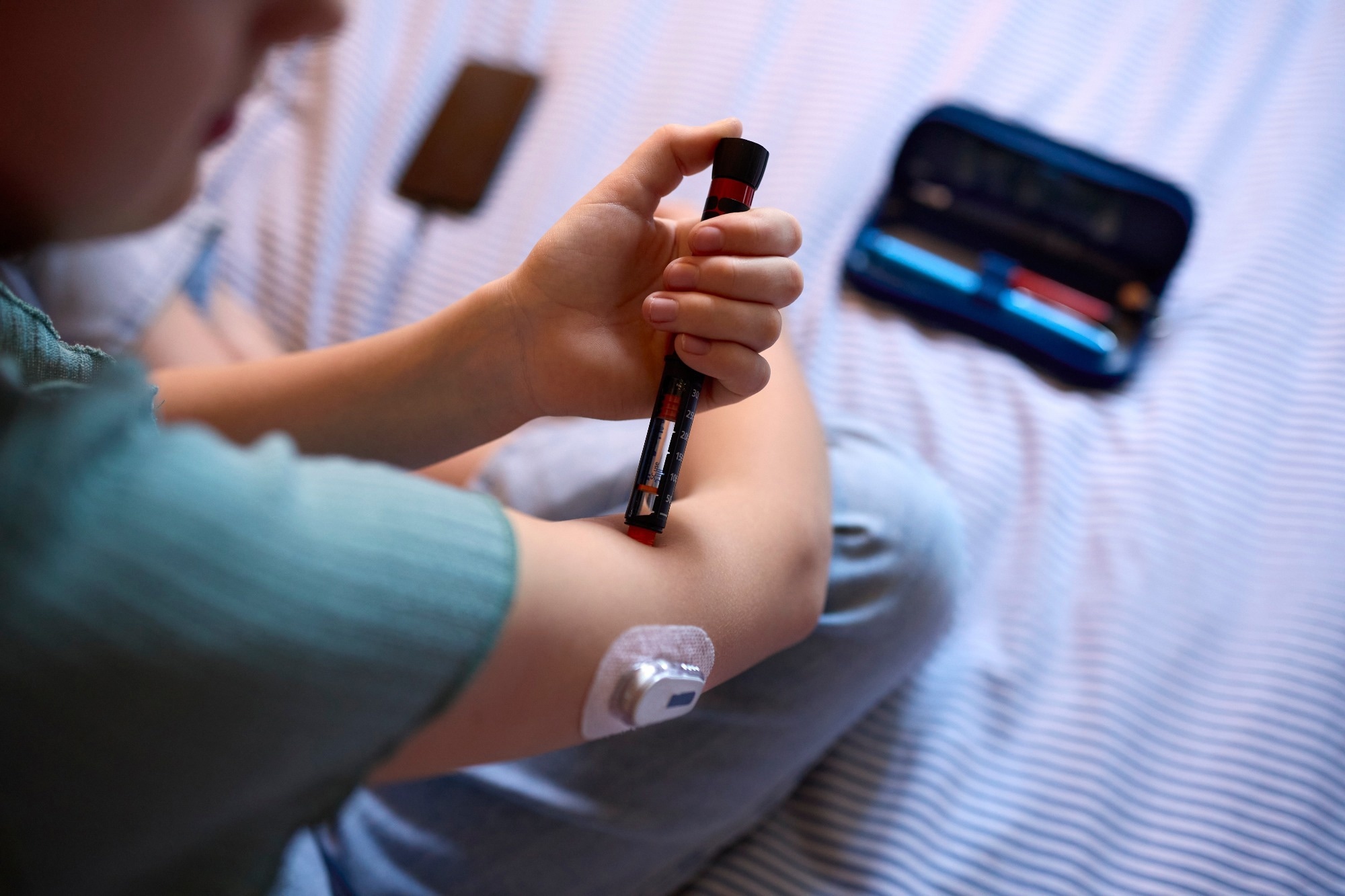Prenatal smoking is related to a lower T1D incidence in offspring, possibly due to variables such as low birth weight. It may also lower the chance of developing T1D later in life. The mechanism underlying the link is unknown; however, it could be due to the immunosuppressive effects of nicotine. If smoke exposure during the prenatal period reduces or delays T1D establishment, it may potentially influence adult-onset diabetes among smokers.
 Study: Prenatal and adult exposure to smoking and incidence of type 1 diabetes in children and adults–a nationwide cohort study with a family-based design. Image Credit: Monkey Business Images / Shutterstock
Study: Prenatal and adult exposure to smoking and incidence of type 1 diabetes in children and adults–a nationwide cohort study with a family-based design. Image Credit: Monkey Business Images / Shutterstock
About the study
In the present study, researchers examined prenatal smoking exposure and smoking habits during adulthood concerning T1D incidence in children and adults.
The study examined T1D prevalence among Swedish individuals, concentrating on mother smoking during pregnancy and adult smoking. The Swedish National Population, Patient, Prescription, Diabetes, Cause of Death, Medical Birth, Multigeneration, Military Registers, Labor Market Studies (LISA), and the longitudinal Integration Database for Health Insurance data were analyzed by the researchers. T1D patients were compared to their non-diabetic brothers and sisters at the time the cases were detected using cohort and sibling designs.
Conditional logistic regression models were used to estimate the odds ratios (ORs) of T1D concerning adult and maternal smoking with qualifying sibling groups. In addition, discrete-time proportional hazard regression models were used to determine the hazard ratios (HRs). Covariates adjusted were sex, calendar year, family history of diabetes, maternal body mass index (BMI) for exposure to maternal smoking, or adult BMI. The ORs were sex-adjusted for the age-matched siblings. Adult smoking analysis adjustments were made for BMI.
The cohort analyses of smokers versus non-smokers and T1D incidence covered individuals from birth (Birth Cohort) or study initiation (Pregnancy and Military Conscription Cohorts) until 30 years of age, diabetes diagnosis, migration, death, or 31 December 2019, whichever occurred first. Individuals born between 1983 and 2014 reported in the Medical Birth Register comprised the Birth Cohort.
The adult smoking analyses included the Military Cohort and the Pregnancy Cohort. The Military Cohort comprised individuals completing military conscription from 1997 to 2010 and having smoking data records in the Medical Birth Register. The Pregnancy Cohort included women who conceived before 30 years of age from 1983 to 2014 and had smoking data recorded in the Medical Birth Register. The study populations were tracked in the Patient, Diabetes, and Prescribed Drug Registers for T1D diagnosis until 30 years of age.
The researchers identified incidental instances of T1D using data from the Diabetes and Patient Registers. They excluded individuals who received diabetes diagnoses and used glucose-lowering medications before baseline. Siblings in the Birth, Military, and Pregnancy Cohorts were linked using the Multigeneration Register. The International Classification of Diseases, tenth revision (ICD-10) codes were used to diagnose diabetes.
Results
The research included 3,170,386 individuals under 31 years with T1D (0.6%) and 1,608,291 adults with diabetes (0.8%). Smoking during pregnancy was associated with a decreased risk of T1D during youth and young adulthood (20 to 24 years of age) but not at an older age. The hazard ratio for adult smoking was 1.1 overall and 1.3 among individuals with a history of diabetes in the family. T1D patients showed an increased likelihood of having diabetic parents, being less educated, obese, and smoking at baseline.
Sibling studies produced comparable findings for maternal cigarette smoking and T1D among children, but there was no reduction in the incidence of T1D during adulthood. Cohort analyses by age found a 24% to 30% reduced T1D incidence in the children of smoking mothers compared to mothers who did not smoke till 24 years of age, but no difference between the ages of 25 and 30. A corresponding sibling study, which compared individuals with maternal smoke exposure with their unexposed brothers and sisters, found a lower risk until the ages of 10 and 14, a trend toward a lower risk between 15 and 19 years, but no reduction in risk at older ages.
Prenatal smoking was related to a lower incidence of juvenile T1D in those with and without a diabetes family history. T1D risks among smokers were 1.2, 1.1, and 1.1, belonging to the Pregnancy, Military, and combined cohorts, respectively, without any evidence of dosage-response connections. The results were unaffected by adjusting for maternal smoke. Combining data on adulthood and prenatal smoking exposure demonstrated a lower incidence of T1D during adulthood only in individuals with maternal smoke exposure but no cigarette smoking habits as adults. The Military Cohort results showed no increase in T1D incidence among smokers and snus users.
Overall, the study findings showed that maternal smoking during pregnancy reduced T1D development risk in childhood; however, the association disappeared in adulthood. Smoking during adulthood did not lower T1D risk, with a few findings even indicating contradictory results. Prenatal exposure to smoking was unrelated to adult-onset T1D risk.
Journal reference:
- Yuxia Wei, Jessica Edstorp, Maria Feychting, Tomas Andersson, and Sofia Carlsson, Prenatal and adult exposure to smoking and incidence of type 1 diabetes in children and adults-a nationwide cohort study with a family-based design, The Lancet Regional Health-Europe 2024;36: 100775, Published Online, xxx, doi: https://doi.org/10. 1016/j.lanepe.2023. 100775, DOI: https://doi.org/10.1016/j.lanepe.2023.100775, https://www.sciencedirect.com/science/article/pii/S2666776223001941